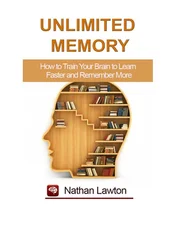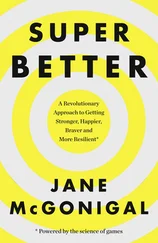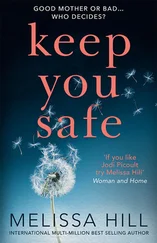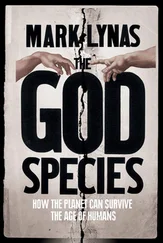You get a famine if the price of food spikes far beyond that of some people’s means. This can be because food is short, objectively. This can be because the rich have bid the resources normally used to produce food away to other uses. You also get famines even when the price of food is moderate if the incomes of large groups collapse…. In all of this, the lesson is that a properly functioning market does not seek to advance human happiness but rather to advance human wealth. What speaks in the market is money: purchasing power. If you have no money, you have no voice in the market. The market then acts as if it does not know that you exist and does not care whether you live or die.
DeLong describes a marketplace that leaves people to die—not out of malice, but out of indifference. Coupling this idea with Sen’s entitlement theory, you might say oppression and war deprive people of the entitlements necessary to feed themselves. The problem is that the market doesn’t care if people starve or grow ill. Based on historical evidence from famines in Ireland, Greece, and China, we can reasonably expect that if our economic systems remain unchanged, we will continue to suffer periods of mass death from famine. These famines will get worse and worse while the market continues to ignore the growing impoverished class.
Of all the forms of mass death we’ve looked at so far, famine can be understood as the least natural of all disasters. The good news is that famines (often accompanied by pandemics), unlike megavolcanoes and asteroid strikes, are human-made problems with human solutions. If we consider the examples of famine we’ve explored in this chapter, there are a few common themes that emerge in the stories of survivors. All of them have to do with ways that countries have acted collectively to fight mass death. One key lesson we can draw from Black ’47 is that mobility—movement either internally or across national borders—often saves lives. A million Irish immigrants escaped death, thanks in part to other nations allowing them to relocate. Today, Somalian and Ethiopian refugees are attempting to do the same thing as they stream out of regions where food supplies have dried up. By contrast, during the Great Leap Forward, Mao’s government prevented the Chinese who lived in famine-racked provinces from fleeing to other places with better food security. The death tolls that resulted were staggering. Similarly, Greeks who suffered the worst effects of famine during World War II were trapped on islands, unable to flee even if they had wanted to risk the dangers of slipping through the blockades.
Still, global cooperation did ultimately prevent the Greek famine from reaching the proportions that the Great Leap Forward did. A few Greeks left the country, but for the most part the population was saved by humanitarian aid coming in from outside. Like immigration, food aid is a solution that requires other nations or regions to cooperatively step in. This solution to famine involves what Sen called transfer entitlements. To survive, starving regions must rely on the kindness and generosity of regions that can ship in their surplus food.
There is another lesson to be drawn from Black ’47 and the Great Leap Forward that is especially important in today’s drought-stricken times. Mass societies need to adapt better to their environments, figuring out ways to farm sustainably so that a few years of bumper crops don’t give way to decades of blight and dust bowls. It is one of history’s great tragedies that Mao’s attempt to revolutionize China’s land use was so horrifically misguided and ill-informed. He was right that farming methods needed to change radically to sustain China’s huge population. But to say that his implementation was faulty is a gross understatement. Changes in our land use have to be based on an understanding of how ecosystems actually function over the long term. Ultimately, as we’ve learned from studying both human and geological history, the safest route is to maintain diversity. Farmers need to move away from specialized landscapes and monocultures that can make a region’s food security vulnerable to climate change, plant diseases, and pests.
None of these solutions—immigration, aid, and transformed land use—is foolproof, certainly, but they can all prevent large groups from being extinguished. These are solutions that also require mass cooperation, often on a global scale. Preventing famine, like preventing pandemics, has meant changing our social structures. But those changes are always ongoing, often spurred by protests and political upheaval. We even have today’s version of the Peasants’ Revolt in the form of the Occupy movement, whose goals those London rioters in 1381 would undoubtedly have recognized and understood. Still, sometimes it feels as if change doesn’t come soon enough. Famines and their accompanying pandemics are problems that we’ve been trying desperately to solve for hundreds of years. How are we ever going to survive over the next several hundred?
In the rest of this book, we’re going to explore the answer to that question. As we’ve seen, human mass death is caused by a tangle of social and environmental factors. Our survival strategy will need to address both factors. We need a way forward based on rationally assessing likely threats, which we’ve learned about from our planet’s long geological history and our experiences as a species. But we also need a plan that’s based on an optimistic map of where we as a human civilization want to go in the future. To draw that map, we’ll take our cues from some of the survivors around us today, human and otherwise. Those survivors and their stories are what we’ll explore next.
PART III
LESSONS FROM SURVIVORS
10. SCATTER: FOOTPRINTS OF THE DIASPORA
IN THE LAST two parts, we’ve looked at all the ways life on Earth, and especially humanity, have managed to survive hardships that ranged from meteorite strikes and megavolcanoes to the perils of migration and disease. Now we’ll turn to the stories of humans and other life-forms who have survived into the present day, using techniques that could serve us well as we make plans for a future world where our descendants can thrive. We’ll begin with the story of a group of humans, an ancient tribal people today called the Jews, who have retained a distinctive cultural identity for thousands of years. They’ve survived several deadly episodes of persecution in part by scattering and escaping in the face of adversity, rather than allowing themselves to be extinguished in the flames of war. In fact, this strategy of scattering is a crucial lesson taught to children during Passover, one of Judaism’s most important cultural rituals.
When I was the youngest kid at Passover gatherings, I was given the job of reading some questions that are a crucial part of the prayers. None of them made any sense to me, including the very first one: “Why is this night different from all other nights?” As I squirmed in my seat waiting for dinner, I hoped that the answers would explain why I had to eat such weird food, like parsley dipped in salt water and sweet apples mixed with eye-watering horseradish. After many years of grumpily contemplating why I had to eat things that symbolized the tears we shed during slavery, I figured out that Passover had nothing to do with dinner, and everything to do with memory. Passover is the one night every year when Jews retell the biblical story from Exodus about how the diaspora began. It’s become such an important ritual for Jews because the allegorical stories in Exodus mirror actual catastrophic events in Jewish history. This story of survival in the Bible became, in a sense, a template for survival in the real world.
But before we consider Jewish survival in recorded history, let’s recall the Passover story (apples and horseradish are optional). Thousands of years ago in ancient Egypt, the story goes, Jews lived as slaves under a cruel Pharaoh, making bricks for his pyramids and sorrowfully watching their families destroyed by backbreaking labor. Eventually a great leader came along, named Moses, and he begged the Pharaoh for his people’s freedom. When Pharaoh refused, he discovered that the single, incorporeal God of the Jews—so different from his people’s many half-animal gods—had some tricks up His sleeve. The God of the Jews sent ten plagues to devastate the Egyptian population, including crop-eating locusts, frogs falling from the sky, and a rain of blood (this always struck me as particularly awesome when I was a kid). In the worst of the plagues, God’s “angel of death” took the firstborn son from every house that wasn’t Jewish. Finally, the Pharaoh was persuaded. He told Moses to get his people out of the city, and the Jews spent one frantic day packing all their goods. They didn’t even have enough time to let their bread rise, which is why we symbolize this part of the story by eating a flatbread called matzo during Passover.
Читать дальше
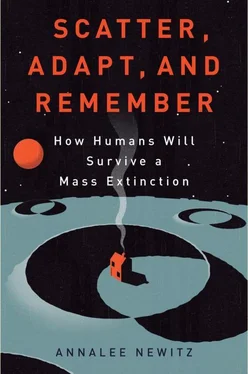

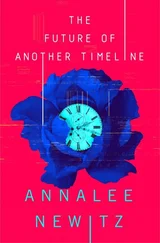



![Аннали Ньюиц - Автономность [litres]](/books/424681/annali-nyuic-avtonomnost-litres-thumb.webp)

